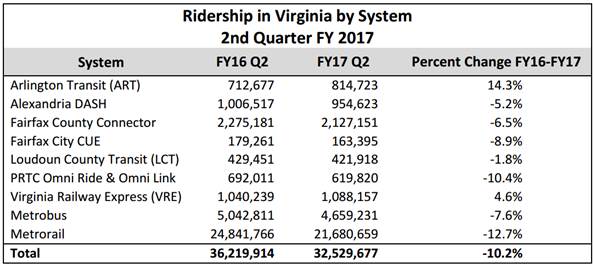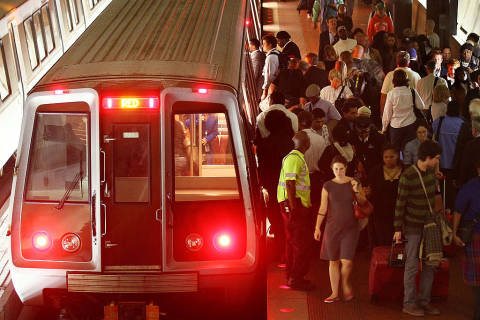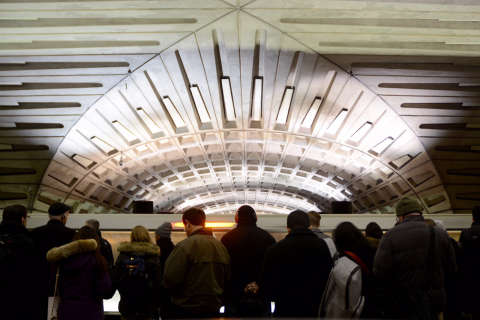WASHINGTON — Metro ridership has dropped dramatically at stations affected by 24/7 track work, new numbers show, including a 41.2 percent decline in the last three months of 2016 at the Vienna station.
Breakdowns for the Northern Virginia Transportation Commission show that in October, when major track work significantly cut service at Vienna and Dunn Loring, ridership dropped even more significantly compared with the year before — from 516,595 trips to 149,529. While smaller, a decline remained in November.
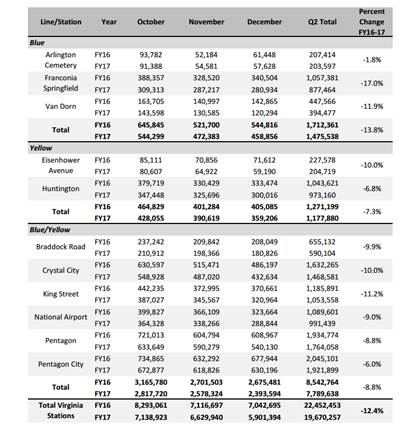
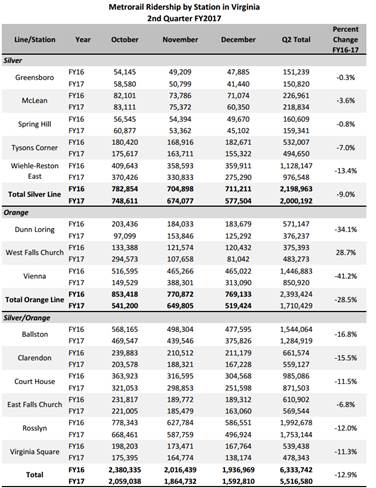
At Dunn Loring, the drop over the three-month period from October to December 2016 compared with the same time in 2015 was 34.1 percent. West Falls Church did see a 28.7 percent increase in ridership, as some riders appear to have switched stations, but the three stations combined still saw a 28.5 percent decline, and the parking lots are now generally around half-empty.
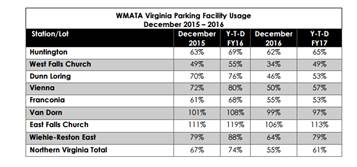
Silver Line ridership dropped 9 percent from fall 2015, with the largest decline at Wiehle-Reston East.
Along the stations served by both the Orange and Silver lines in Arlington, ridership dropped 12.9 percent in the three-month period compared with the year before. That is in line with ridership declines across the Metro system and the combined average drop of 12.4 percent across Northern Virginia.
At Blue Line stations, Franconia-Springfield ridership dropped 17 percent, while Van Dorn Street ridership dropped 11.9 percent. Yellow Line stations Huntington and Eisenhower Avenue saw smaller drops, but still declined a combined 7.3 percent.
The shared Blue and Yellow Line stations also saw declines of about 8.8 percent.
Metro hopes riders will return if the system become more reliable, but the agency is planning to cut scheduled service and raise fares later this year.
Other Northern Virginia transit systems also saw ridership declines in the last three months of the year, combining for a 10.2 percent decline across Alexandria’s DASH buses, Fairfax Connector, Fairfax City’s CUE bus and others.
The only transit agencies to see significant gains were Arlington Transit (ART), which increased ridership by 14.3 percent to 814,723 trips during the quarter, and Virginia Railway Express (VRE), which saw a 4.6 percent increase in ridership to 1,088,157 trips. MetroAccess paratransit ridership in Northern Virginia rose slightly, by just 0.25 percent.
